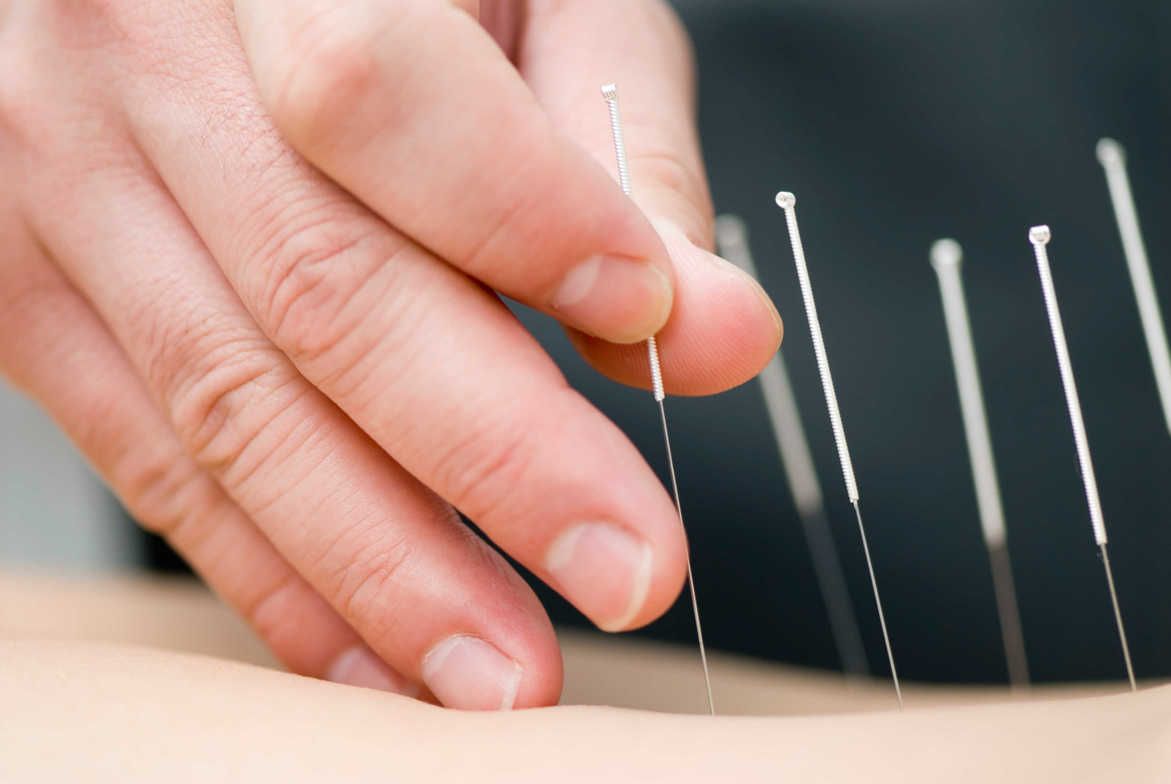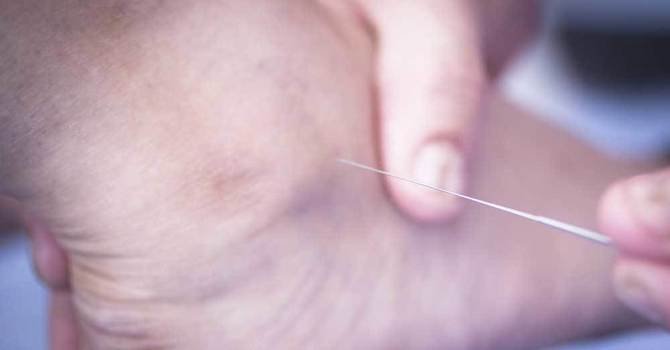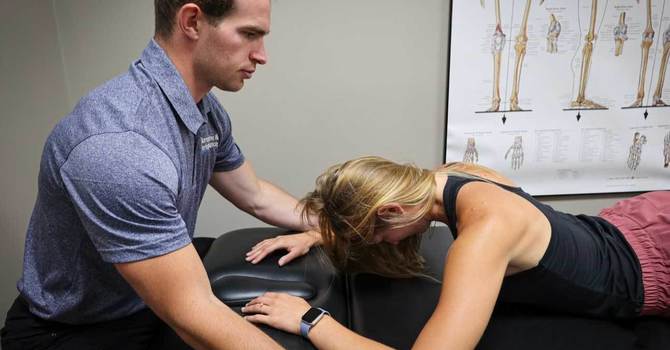
What is dry needling?
At first thought, dry needling might sound intimidating. But it is a technique that is growing in popularity for its effectiveness in treating musculoskeletal injuries.
Dry needling uses thin needles to treat underlying muscular trigger points for the management of neuromusculoskeletal pain and movement impairments.
When muscle tissue is dry-needled, a local immune response is triggered that can relax muscles, increase blood flow, and kick-start the healing process.
How does dry needling work?
Dry needling is used mainly for musculoskeletal injuries where needles are placed in tight or sore muscles, trigger points, specific joints, or areas where “stimulation” is needed. Dry needling works to stimulate neural, muscular, and connective tissue.
Of all its benefits, dry needling is the most effective in releasing trigger points.
More on trigger points: According to Mayo Clinic, "A trigger point is a local band of tight, irritable and dysfunctional muscle tissue. This often emerges because of injury, overuse or poor movement patterns. Trigger points can disrupt your muscle function, restrict your range of motion or cause pain and tenderness... When dry needling is applied to an affected muscle or trigger point, it can decrease muscle tightness, increase blood flow and reduce pain."
Trigger points develop due to the brain and nervous system holding tension to help protect the muscle from moving a joint past a range of motion that it can’t handle because of a lack of proper stabilization around that joint.
Essentially, trigger points are trying to protect a muscle or joint but decrease the function of a muscle and can cause pain.
We dry needle a trigger point to release it, then use Dynamic Neuromuscular Stabilization to get the muscle fully functioning. Stabilizing a joint will help prevent the trigger point from immediately coming back.
What are the benefits of dry needling?
Dry needling works to:
1. Increase blood flow to the area
2. Decrease swelling
3. Decrease pain
4. Increase range of motion
5. Trigger point release
With Dry needling increasing range of motion, decreasing muscle tone, and decreasing pain in patients with musculoskeletal conditions, these improvements give us a window in the office to use rehabilitation to get lasting results.
Dry needling is also very time efficient. There are other ways to release trigger points, but dry needling allows us to do it immediately.
With conservative therapy, we like to start with the most minimally invasive techniques. A study showed that dry needling was as effective as a corticosteroid injection for tennis elbow. This study is important because it shows that we should start with the least invasive technique before advancing to more invasive procedures such as injections or surgery.
What conditions is it useful for?
Conditions we often treat with dry needling are:
- Headaches and migraines
- Ankle Sprains
- Muscle pulls and strains
- TMJ
- Chronic Back Pain
- Chronic Neck Pain
- Lateral Epicondylitis (tennis elbow)
- Plantar fasciitis
- Scar Tissue
- Tendinopathies
One injury we love dry needling is ankle sprains. One research study showed that dry needling was effective in activity muscles around the ankle that get inhibited due to chronic ankle sprains. You can read our blog about ankle sprains here: 3 Things You Need To Know About Ankle Sprains Today.”
Dry needling is also beneficial for anyone with tension headaches. Muscles around the neck and head routinely become tight and contain trigger points resulting in tension headaches. Dry needling can help reduce the tightness in these trigger points.
Conditions like chronic shoulder impingement can be challenging to treat because of the structure of the shoulder. Dry needling stimulates healing in hard-to-reach areas allowing for quicker healing times.
How is it different than acupuncture?
Many people ask what the difference is between dry needling and acupuncture.
Based on Eastern medicine, acupuncture places needles in specific points along meridians. Meridians are like specific pathways or highways in the body that allow for “qi” or energy transfer. According to the acupuncture theory, when there is an imbalance in Qi, you get sick or feel pain.
Acupuncture is used to treat many different conditions and pathologies, not just musculoskeletal health.
Based on Western medicine, dry needling places needles directly in the muscle or joint involved. Both acupuncture and dry needling use the same needles but have different approaches.
Our office mainly uses dry needling, but Dr. Nate Skare has taken a 100-hour acupuncture course. He will use it occasionally to help with conditions such as neck pain, low back pain, concussions, and knee osteoarthritis.
To sum it up:
Using needles to help with pain and injuries is thousands of years old. Dry needling alone is a powerful tool to help with musculoskeletal pain or injuries. We have excellent and lasting results when combined with other techniques like chiropractic manipulation and Dynamic Neuromuscular Stabilization.
If you want to learn how dry needling can help you. Or, if you have been struggling with an injury, reach out to us at Skare Spine and Performance to see how we can help you.
1. Cagnie B, Barbe T, De Ridder E, Van Oosterwijck J, Cools A, Danneels L. The influence of dry needling of the trapezius muscle on muscle blood flow and oxygenation. J Manipulative Physiol Ther. 2012;35(9):685-691. doi:10.1016/j.jmpt.2012.10.005
2. Dıraçoğlu D, Vural M, Karan A, Aksoy C. Effectiveness of dry needling for the treatment of temporomandibular myofascial pain: a double-blind, randomized, placebo controlled study. J Back Musculoskelet Rehabil. 2012;25(4):285-290. doi:10.3233/BMR-2012-0338
3. Gattie E, Cleland JA, Snodgrass S. The Effectiveness of Trigger Point Dry Needling for Musculoskeletal Conditions by Physical Therapists: A Systematic Review and Meta-analysis. J Orthop Sports Phys Ther. 2017;47(3):133-149. doi:10.2519/jospt.2017.7096
4. Gregory, T. J., Rauchwarter, S. A., & Feldman, M. D. (2022). Clinical Commentary: Rehabilitation Using Acute Dry Needling for Injured Athletes Returning to Sport and Improving Performance. Arthroscopy, sports medicine, and rehabilitation, 4(1), e209–e213. https://doi.org/10.1016/j.asmr.2021.09.035
5. Jenson B. Dry needling to treat muscle pain. Mayo Clinic Health System. https://www.mayoclinichealthsystem.org/hometown-health/speaking-of-health/on-pins-and-needles-just-what-is-dry-needling. Published February 10, 2023. Accessed February 10, 2023.
6. Mejuto-Vázquez MJ, , Salom-Moreno J, , Ortega-Santiago R, , Truyols-Domínguez S, , Fernández-de-las-Peñas C. and Short-term changes in neck pain, widespread pressure pain sensitivity, and cervical range of motion after the application of trigger point dry needling in patients with acute mechanical neck pain: a randomized clinical trial. J Orthop Sports Phys Ther. 2014; 44: 252– 260.
7. Nagarajan V, Ethiraj P, Prasad P A, Shanthappa AH. Local Corticosteroid Injection Versus Dry Needling in the Treatment of Lateral Epicondylitis. Cureus. 2022;14(11):e31286. Published 2022 Nov 9. doi:10.7759/cureus.31286
8. Navarro-Santana MJ, Sanchez-Infante J, Fernández-de-Las-Peñas C, Cleland JA, Martín-Casas P, Plaza-Manzano G. Effectiveness of Dry Needling for Myofascial Trigger Points Associated with Neck Pain Symptoms: An Updated Systematic Review and Meta-Analysis. J Clin Med. 2020;9(10):3300. Published 2020 Oct 14. doi:10.3390/jcm9103300
9. Salom-Moreno J, , Ayuso-Casado B, , Tamaral-Costa B, , Sánchez-Milá Z, , Fernández de-las-Peñas C, , Alburquerque-Sendín F. and Trigger point dry needling and proprioceptive exercises for the management of chronic ankle instability: a randomized clinical trial. Evid Based Complement Alternat Med. 2015; 2015: 790209.
10. Takeshima N, , Sozu T, , Tajika A, , Ogawa Y, , Hayasaka Y, , Furukawa TA. and Which is more generalizable, powerful and interpretable in meta-analyses, mean difference or standardized mean difference? BMC Med Res Methodol. 2014; 14: 30
11. Ziaeifar M, , Arab AM, , Karimi N, , Nourbakhsh MR. and The effect of dry needling on pain, pressure pain threshold and disability in patients with a myofascial trigger point in the upper trapezius muscle. J Bodyw Mov Ther. 2014; 18: 298– 305.

Nate Skare
Contact Me


